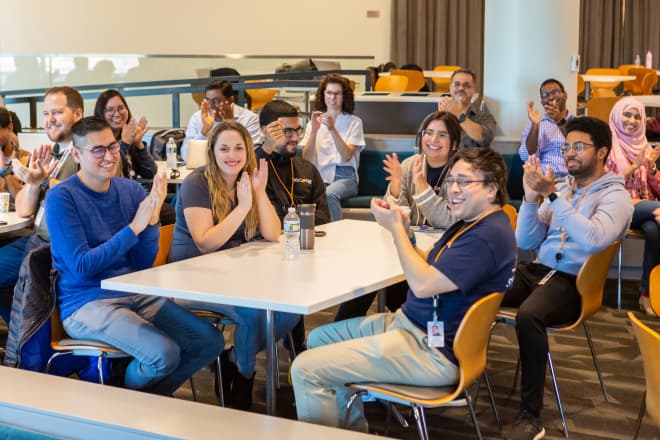Creating products and experiences with accessibility in mind is the right thing to do for our customers. While it's easy to think that you are exempt from thinking about accessibility because you’re only creating internal products, the truth is that accessibility affects more people than we know and is all our responsibility.
Consider these numbers:
-
20% of the total U.S. (United States) population has a disability (Source)
-
27% of U.S. adults have a disability (Source)
-
66% of the global population 60-years-old and older need assistive technology, including glasses (Source)
- 11% when the need for glasses is excluded
Yet, even with all this data there are applications attempting to serve millions that have not prioritized accessibility. We need to and should do better.
This blog post discusses what accessibility is, how it relates to compliance, and what resources you can use to ensure the applications you’re building are accessible.
What is accessibility?
Accessibility is the inclusive practice of removing barriers that prevent interaction with and access to our web experiences, native mobile application experiences, and digital communications.
The Web Content Accessibility Guidelines (WCAG) 2.1 AA offers guidance on how to design and develop an optimal digital user experience for all customers. To comply with these guidelines, we should focus on removing barriers in the following key areas:
- Cognitive disabilities that affect how people process information
- Visual disabilities like low vision, color blindness and light sensitivity
- Auditory disabilities that affect people’s hearing and speech
- Motor disabilities that affect movement and often require
assistive technology like keyboards, a head wand, or a mouth stick
Why should we make experiences accessible?
Ensuring that the experiences we create are accessible to all represents the Discover value of Doing the Right Thing. A core principle of the Discover design thinking approach is to empathize with your customers and users. Empathizing helps us explore and understand a challenge from the human context, which is imperative to designing for accessibility.
Good design works for everyone
Accessibility is not only for people with disabilities—good design is good for everyone. If you are not hearing impaired, have you ever watched a video without sound and used subtitles instead? Or enlarged text on a screen because your eyes are tired, and not because you have a visual impairment? While some accessibility issues are permanent, others are temporary or situational.
When to start
If you don’t already have plans to comply with accessibility guidelines, now is the time to start doing so.
Additionally, if you are starting to plan a new product or feature, build accessibility into that plan. The WCAG 2.1 AA guides are a great benchmark that you can aim for when developing new products.
The question for many now though is, how do I get started? You can start by researching what being WCAG accessible means and how to comply with those standards. You can also use the open-source Theme Builder project to assist you.
Introducing the Accessibility Theme Builder
The Accessibility Theme Builder is a system for generating machine-readable asset types allowing design systems to publish products that are accessibly inclusive. Teams can use this resource to make their applications more accessible.
Adhering to an Atomic Accessibility Design Methodology, the Accessibility Theme Builder enables designers to systematically achieve consistent standards compliance. The system collects atomic design system variables, allowing a designer to incrementally create asset types (JSON, CSS files) that can be used to:
- publish physical and digital solutions
- generate reusable design components that are leveraged to build physical and digital solutions
Learn more about the Theme Builder and how designers and developers can use it to create accessible experiences.



